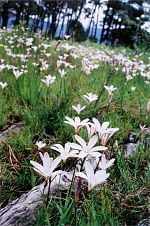Constantia, Cape Town
1684 establishments in the Dutch EmpireEngvarB from January 2014Suburbs of Cape TownWine regions of South Africa

Constantia is an affluent suburb of Cape Town, South Africa, situated about 15 kilometres south of the centre of Cape Town. It is considered to be one of the most prestigious suburbs in South Africa. The Constantia Valley lies to the east of and at the foot of the Constantiaberg mountain. Constantia Nek is a low pass linking to Hout Bay in the west. Constantia is a beautiful family orientated place for families to grow, with the leafy canopies of trees and top schools.
Excerpt from the Wikipedia article Constantia, Cape Town (License: CC BY-SA 3.0, Authors, Images).Constantia, Cape Town
Groot Constantia Road,
Geographical coordinates (GPS) Address Nearby Places Show on map
Geographical coordinates (GPS)
| Latitude | Longitude |
|---|---|
| N -34.031388888889 ° | E 18.418333333333 ° |
Address
Cloete Cellar building
Groot Constantia Road
7806 , High Constantia
Western Cape, South Africa
Open on Google Maps









